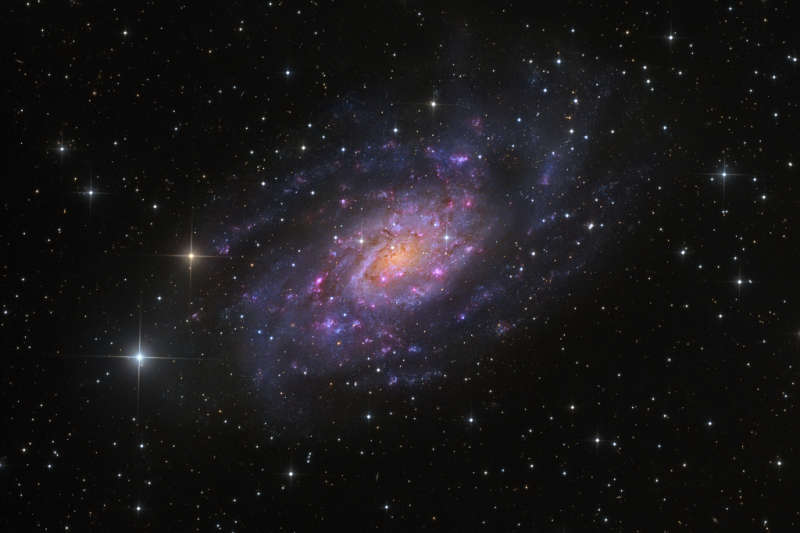
|
Credit & Copyright: Martin Pugh
Explanation:
Magnificent island universe
NGC 2403
stands within the boundaries
of the long-necked constellation
Camelopardalis.
Some 10 million light-years distant and about 50,000 light-years
across, the spiral galaxy also seems to have more
than its fair share of giant star forming
HII regions,
marked by the telltale reddish glow of atomic hydrogen gas.
The giant HII regions are energized by clusters of hot, massive stars
that explode as
bright supernovae
at the end of their short and furious lives.
A member of the M81 group of galaxies,
NGC 2403 closely resembles another galaxy with an
abundance of star forming regions that lies
within our own local galaxy group,
M33 the Triangulum Galaxy.
Spiky in appearance,
bright stars in this colorful galaxy portrait of NGC 2403
lie in the foreground, within our own Milky Way.
|
January February March April May June July August September October November December |
| |||||||||||||||||||||||||||||||||||||||||||||||||||||||
NASA Web Site Statements, Warnings, and Disclaimers
NASA Official: Jay Norris. Specific rights apply.
A service of: LHEA at NASA / GSFC
& Michigan Tech. U.
Based on Astronomy Picture
Of the Day
Publications with keywords: Camelopardalis - HII region - star formation
Publications with words: Camelopardalis - HII region - star formation
See also:
